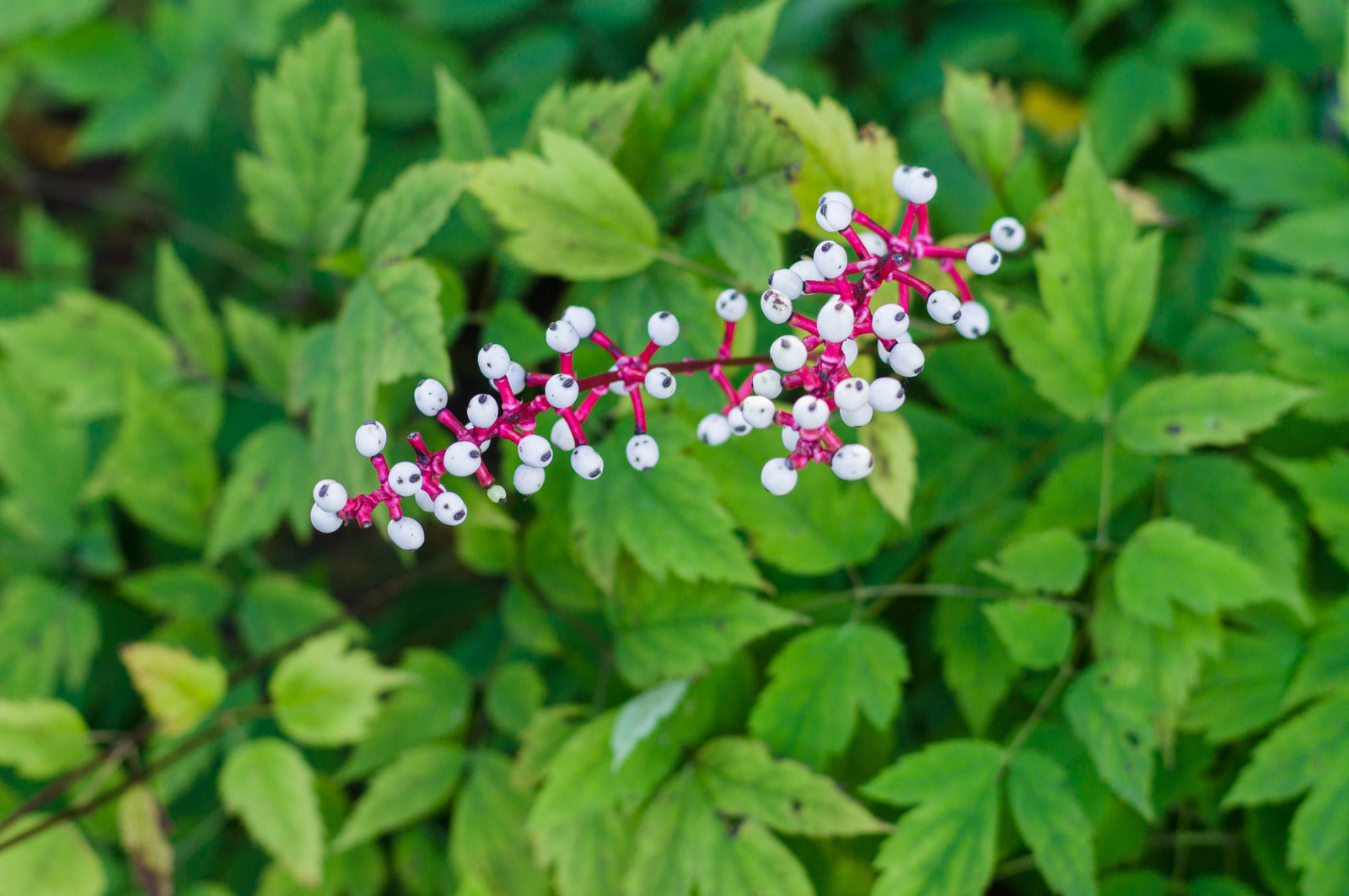ACTAEA PACHYPODA / WHITE BANEBERRY
- Regular price
-
$18.99 CAD - Regular price
-
- Sale price
-
$18.99 CAD
Couldn't load pickup availability
Delivery Fees
Delivery Policy
Enjoy FREE delivery on all orders over $149!
For orders between $80 and $149, a $18.99 delivery fee will apply.
Orders under $80 will be prompted to add more items to your cart.
ACTAEA PACHYPODA / WHITE BANEBERRY
An Elegant Woodland Plant with Toxic Beauty
Actaea pachypoda, commonly known as White Baneberry or Doll's Eyes, is a striking woodland perennial native to North America. Known for its distinctive white berries with black "eyes," this plant is both ornamental and intriguing. While it adds a unique aesthetic to shaded areas, it's important to note that all parts of the plant are toxic if ingested, making it unsuitable for areas where children or pets play.
Why Choose White Baneberry?
- Distinctive Appearance: The plant’s white berries, each with a black dot, give it an unusual and attractive look in the garden.
- Shade-Tolerant: Ideal for woodland gardens, shaded spots, and naturalized areas where it thrives in low light.
- Seasonal Interest: White Baneberry offers interest throughout the growing season, with white flowers in spring followed by the eye-catching berries in summer and fall.
- Wildlife Friendly: While toxic to humans and pets, its berries are consumed by some birds, making it a useful plant in wildlife-friendly gardens.
Key Features:
- Flower Color: White flowers in early summer.
- Berry Color: White berries with distinctive black dots (resembling "eyes").
- Height and Spread: Typically grows 1–2 feet tall and 1–2 feet wide.
- Hardiness: USDA Zones 3–8.
- Sunlight: Prefers partial to full shade.
- Soil Requirements: Thrives in rich, moist, well-drained soils, particularly in woodland or shady garden settings.
Specifications:
- Plant Size: 1–2 feet tall, 1–2 feet wide.
- Flowering Time: Early summer (usually May to June).
- Fruit: White berries with black "eyes," appearing in late summer to fall.
- Hardiness: USDA Zones 3–8.
- Soil: Prefers moist, well-drained, humus-rich soils.
Ideal Uses:
- Woodland Gardens: Perfect for shaded or woodland settings, where its elegant flowers and berries stand out among ferns and other shade-loving plants.
- Naturalized Areas: Ideal for creating a natural look in gardens that mimic forest understory environments.
- Wildlife Gardens: Attracts birds that feed on its berries, but keep in mind its toxicity to humans and pets.
- Specimen Planting: A unique addition to a garden where it can be appreciated for its unusual and striking appearance.
While White Baneberry can be an eye-catching and unique addition to gardens, gardeners should exercise caution due to its toxicity. Best suited for experienced gardeners, this plant thrives in shaded, moist environments and provides a dramatic visual contrast to other plants.

Care Instructions
Different plants have different watering needs. Check the soil moisture by inserting your finger about an inch into the soil. If it feels dry, water the plant until the water drains from the bottom of the pot. Avoid overwatering, as it can lead to root rot.

ACTAEA PACHYPODA / WHITE BANEBERRY
- Regular price
-
$18.99 CAD - Regular price
-
- Sale price
-
$18.99 CAD


